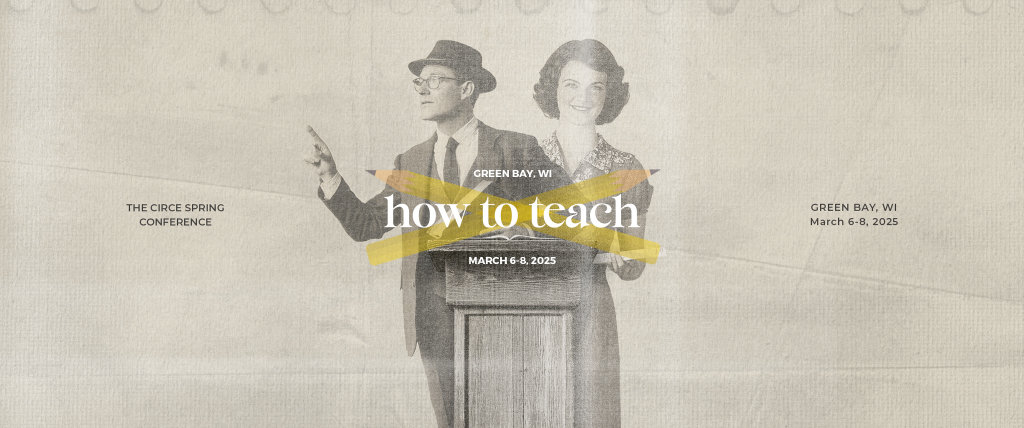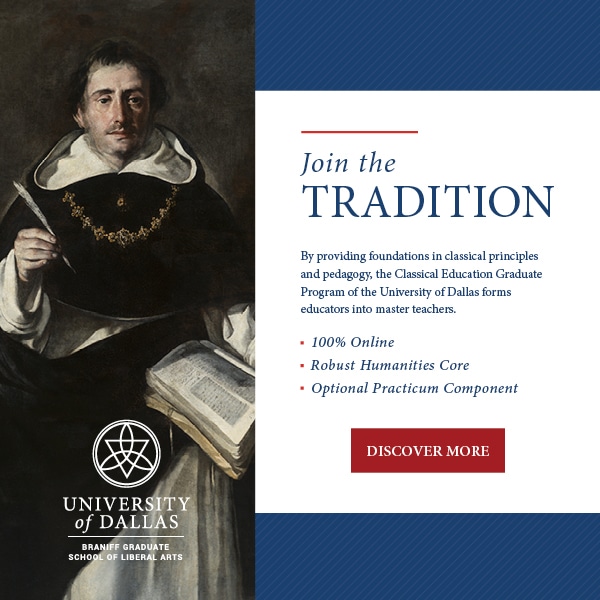Teaching Literature: A Guide for Confused Philosophers

Socrates told us to get out of the cave. Teaching literature forces us to get back in. This is good for us.
Many of the teachers who fill humanities positions in classical schools are philosophy majors who have not really studied literature as literature. They may have read the philosophical chapters of some books, “The Grand Inquisitor” comes to mind, but it is unlikely they have read The Brothers Karamazov as a literary whole. A young philosopher, hired to teach Humane Letters, suddenly finds himself responsible for expounding the wisdom of Narnia, The Song of Roland, and Jane Austen in a way 14-year-olds can grasp. He quickly finds that his strategies for interpreting Aquinas and Heidegger are not sufficient: these strategies give him something interesting to say about every paragraph of Euthyphro, but almost nothing to say about 20 pages of Pride and Prejudice. Such a philosopher-turned-literature-teacher needs a primer for reading and teaching literary wisdom. Here are five things he should know.
First, know that literature and philosophy have the same goal: knowledge of reality. People call Romeo and Juliet “timeless” because its themes are true in many lives in many eras. The story knows what humanity is really like—what we are really like. Thomas Aquinas wrote arguments to understand virtue’s essence and importance; Tolstoy wrote stories for the same reason. These are different kinds of inquiry—syllogism and story—and they lead to different kinds of knowledge of similar truths. Aquinas explains why we should be good by carefully defining virtue (“good habit”) and showing why it is necessary for human happiness (contemplation of the divine essence). Tolstoy explains why we should be good by showing us a miserable man who has every fleshly comfort, but little virtue (Ivan Ilych); a man who achieves happiness only at his death, as he learns how to love another person truly. Aquinas tells no story, and Tolstoy gives no argument, but they both reveal general truth. There is something about a story that says, “Here’s the way it is.” A story is a model of reality. Your goal is to understand and teach that model.
Second, know that your students are still in the cave. Deep in the cave. They might be good people, and they might believe in the world above the cave. But they are teenagers, so they lack the strength to look into the sun. They are like the virtuous pagans, desiring God, but unable to rise to him. Or they are like the vicious pagans. In either case, they need accommodations. Even the seniors.
Third, you need to be like Jesus and Socrates: you need to descend into the cave and show them the intelligible forms incarnated in stories. Don’t define virtue for them: tell them about Ivan Ilych. But that’s not enough. Next, they need a story from your life, and then a story from their lives. Give them many narrative examples of the one form. The closest they can get to the land above the cave is an inductive intuition, glimpsing the universal within the book, your life, and their lives.
Fourth, there is a process you can follow. The elementary students at my school learn the following questions, which I find excellent (never underestimate the wisdom of elementary teachers): what, why, which, and how.
What First, read the book with your students and explain what is happening on the surface. Do not assume they understand. If you read aloud in class, which I recommend, stop every couple of pages. Ask the students what’s happening. If the story is Beowulf, make sure they know that Grendel has come and killed everyone in the hall. You can also ask what they notice about what’s happening, and what they wonder about what’s happening.
Why Discuss with the students why something is happening. What is Grendel’s motivation to kill? Why in this hall? Grendel is an outcast, and he hates the human world. But there is more. Here you might consult a dictionary of symbols. Grendel is a monster, and a symbol dictionary can tell you monsters often guard treasure. So, you can ask, “Does Grendel guard a treasure?” In a way, yes: he attacks the hall just as it is being filled with songs of the creation of the world. Heorot is full of worship, and Grendel tries to separate humans from that worship. So, the demon tries to prevent the center of human society from knowing and worshipping. This is more than just a monster fight: it is the way of things. In The Hobbit, you can ask, “Why spiders? Do spiders mean something?” If there is violence, you can ask, “Why violence?” Physical battles are often symbols of spiritual battles. The symbol can shed a whole new light on the story.
Which Ask which higher truths are revealed in the story. Joshua Gibbs has proven that proverbs are useful ways to articulate this. A dominant theme in Beowulf is mortality, so a fitting proverb is “memento mori”: remember you must die. Heorot will burn one day. We know this from the start of the Beowulf. We are all Heorot. The point, then, is not to try to live forever. The point is to fill the hall with worship while it stands. Death is coming; judgment day is coming; you have only a little time to be like Beowulf by banishing demonic ignorance and idolatry from your heart. And even if you do banish the demons, Grendel’s mother comes next, and then a dragon. As the gospels say, an exorcised demon returns, finds the house swept clean, and fills it with worse demons than before. This is how life goes.
How Finally, figure out and explain how this universal reality is true in your life and the lives of your students. For example: Beowulf finds his inevitable death motivating: he has one chance to live a worthy life, a life of banishing demons and restoring worship. This is also our story. The average American 14-year-old has less than 23,000 days of life left. The average teacher has far less. You, like Heorot, will fall. The question is not how to stop this, but what to do with the time you have. Tell your students a story in which you failed to be like Beowulf: that year when you watched TV for five hours a day, the years in which you listened to whatever was popular on the radio and thereby let the secular, demonic zeitgeist fill your heart until a priest called you on your wickedness; the time you were so focused on overcoming one sin that you completely failed to notice your other sins which everyone around you saw every day. And tell them the story of a 14-year-old who’s wasting his life, like the story of Trent in Gibbs’ How to Be Unlucky. Then tell them they can live worthy lives, if they choose to. They can live so as to die as heroes.
To a philosopher, all this “application” might feel like reducing the text. You may think to yourself, “Surely the goal is not to make the text relevant to students, but to make students relevant to the text.” It might feel like these other stories are distractions from the text, not insight into it. But you’re wrong. Literature gives us universals as embodied things. You can only experience these truths incarnated. We need Jesus’ body; we need truths in matter. You are giving students multiple embodied examples of the same universal, allowing them inductively to know the reality beyond those examples. The story, the applications, and the connections to other stories form the literary ladder out of the cave.
And fifth, once you have done all of this for a book well, plan to teach the book differently next year. Introduce the book with one of your own stories, then read the book, using that story as a key, until they make the connection between that story and the book: the insight that this story is their story.
A few other practical notes:
- Make some small, mid-book assessments that ask students just to explain what happened and maybe even why. Hint at the higher truth, if you can. Then make some end-of-book assessments that are fiercely practical: have students tell a story from their own life that parallels the text, without even referencing the text, and grade them based on how well they capture the higher truth. And for other books, make more traditional end-of-book assessments, prompts that have students use sound exegesis to explain the higher truth within the text.
- Buy a dictionary of symbols, like the Penguin edition. When something in the story seems weird, and you can’t answer why it happens or why it matters, look it up in the dictionary. In the Iliad, Achilles fights a river. That’s weird. It turns out, rivers often symbolize boundaries. Does that make sense of other things in the Iliad? Yes. There is a river surrounding Troy, which contains all the fighting. There is a river surrounding Achilles’ shield, which portrays the cosmos. Fighting the river (and losing) is a symbol of Achilles’ doomed attempt to get beyond hero culture and his two fates. It symbolizes Achilles’ desire for true, Christian, eternal life, secured not by violent glory but by virtuous treasures in heaven.
- Buy a dictionary of proverbs, like Penguin’s, or the Oxford Book of Aphorisms. If “Greed” is a theme in a story, notice it, and consider which traditional sayings about greed best capture the revelation of the story. A dictionary of proverbs can give you more specific accounts of greed, like “No man is rich who shakes and groans, convinced that he needs more.” Ask if that proverb captures the higher truth in the book. If not, try another proverb about greed. Use a few to articulate the higher truth.
- Ask other teachers what “out of the box” ideas they have for making the books seem more relevant. You’ll get some good ideas.
Finally, accept that this is strange and difficult. Literature is not the same as philosophy. But the students need it, because they’re in the cave. And if we’re being honest, you are too. You need stories. You don’t have the strength to look at the forms. Approach the light through stories. That’s what Socrates wants for you, after all: he is a teacher, and the allegory of the cave is a story he made for you.
Ryan Klein
Ryan Klein has taught Great Books, Aristotelian Logic, and Bible to students in middle school, high school, and college. He currently teaches at Philadelphia Classical School. He earned a Masters in Teaching from the Templeton Honors College, and a Masters in Philosophy & Theology from Boston College.










